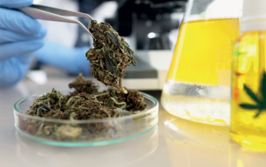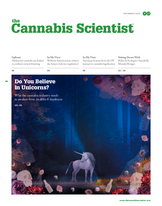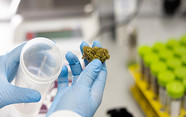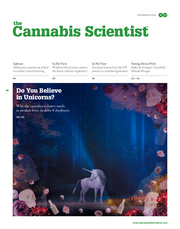
Fewer Drugs, More Cannabis?
Exploring the latest research into the link between cannabis and substance use disorders
Research is growing on the potential role of cannabis in helping to combat drug abuse, particularly the “opioid epidemic” in the US. Though the idea is nothing new, it has so far been challenging to clearly define the role cannabis plays in reducing substance use disorders.
In one recent paper, researchers looked at whether individuals suffering with chronic pain were able to effectively reduce their opiate use with medical cannabis (1). They conducted a retrospective cohort study to determine whether individuals who were provided with medical cannabis certification exhibited lower morphine milligram equivalent (MME) levels. Their results showed a reduction of -12.3 MME across all individuals, and as much as 31.3 percent in those with baseline opioid use. Looking more specifically at the location of pain, those with neck pain saw a 41.5 percent decrease on average compared with a 29.4 percent decrease and 32.6 percent decrease for knee and lower back pain, respectively. The results suggest that medical cannabis can reduce prescription opiate use for chronic pain treatment and warrant further research.
Similarly, a recent paper from the journal Psychopharmacology looked into the potential of CBD as a dopaminergic medication for methamphetamine-related disorders (2). In a bid to uncover its mechanism of action, the researchers investigated the role of dopamine receptor D1 (DRD1) in the adaptive alteration system that maintains meth-related disorders; next, they looked at how CBD interfered with the snappily named (DRD1)-methyl-CpG-binding protein 2 (MeCP2)-brain-derived neurotrophic factor (BDNF)-tyrosine receptor kinase B signaling pathway. Their results? CBD significantly inhibits dopamine release induced by methamphetamine both in vitro (primary neurons) and in vivo (rat model), building a stronger case for CBD as a therapeutic candidate for methamphetamine-related disorders.
- A Balu et al., Cureus, 13, e20240 (2021). DOI: 10.7759/cureus.20240
- B Shen et al., Psychopharmacology (2022). DOI: 10.1007/s00213-021-06051-y
By the time I finished my degree in Microbiology I had come to one conclusion – I did not want to work in a lab. Instead, I decided to move to the south of Spain to teach English. After two brilliant years, I realized that I missed science, and what I really enjoyed was communicating scientific ideas – whether that be to four-year-olds or mature professionals. On returning to England I landed a role in science writing and found it combined my passions perfectly. Now at Texere, I get to hone these skills every day by writing about the latest research in an exciting, creative way.












